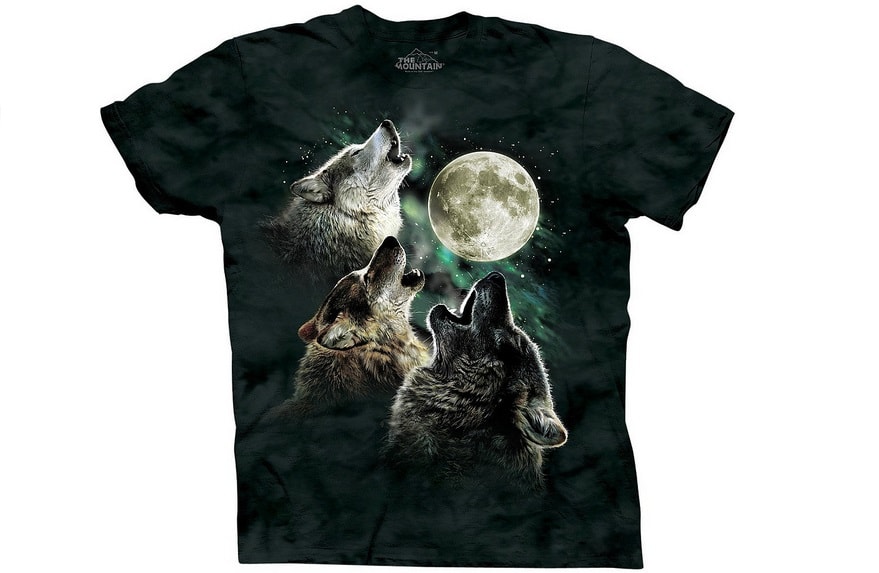By Brandon Lewis
A single review on Amazon started it all. The item reviewed was a simple T-shirt featuring a pack of wolves howling at the moon — a listing most people would scroll past.
But not this customer.
“This item has wolves on it which makes it intrinsically sweet and worth 5 stars by itself,” the customer wrote. “But once I tried it on, that’s when the magic happened.”
And by magic, he meant an encounter he had at Walmart, where his snazzy new wolf tee drew attention from several women.
This satirical review translated to unlikely success. The Mountain Corporation, the clothing company that made the shirt, saw sales skyrocket as it became a top-selling item in Amazon’s clothing store. This success story shows just how powerful product reviews can be.
In fact, a 2016 survey by BrightLocal found that 84 percent of people trust online reviews as much as a personal recommendation. This shift in consumer behavior is also impacting how companies develop their marketing strategy.
Here’s a look at how product reviews are changing the way you should approach marketing:
Educate, Don’t Sell
When you adopt a sales mentality in your marketing strategy, you unintentionally turn people away. Consumers perceive sales tactics as deceptive because they don’t believe you have their best interest in mind.
Product reviews are often informative and educational, and that’s how your marketing strategy should be. You want to provide value for them before they even consider buying your products or services.
Whole Foods uses their online presence to accomplish this. Their blog, The Whole Story, provides content aimed at empowering their customers with nutritional advice and recipes as well as tips on shopping. For example, a May 2017 post shows shoppers how to find skin protection supplies in preparation for summer.
It doesn’t scream ‘buy this’ or adopt a salesly tone. Instead, the content educates shoppers on the differences between physical and chemical sunscreens and demonstrates how Whole Foods avoids specific ingredients that are harmful to the environment and to public health.
Engage With Your Audience
Product reviews build on each other and contribute to an ongoing dialogue. Great marketing does the same.
The cosmetics and beauty products chain Sephora focuses on building communities for their audience. They created Beauty Talk to encourage honest, unbiased reviews and to connect consumers with each other.
Users share daily skincare routines and offer advice and suggestions. Not only does this engage, but also it fuels passion and unites readers. Sephora also connects their audience with trained experts, beauty specialists, and estheticians for expert guidance.
Build your marketing strategy with the future in mind. When companies like Sephora can continually create and engage with their community, they go beyond just being a credible resource — they built a home for their audience, a place that connects people with similar interests.
Tell Authentic Stories
Product reviews are more than just a list of specs; they’re a story. And marketing should be story-centric, with an emphasis on authenticity.
Outdoor clothing and gear company Patagonia uses their Worn Wear program to share stories about how customers repair and care for their gear so it lasts longer and keeps clothing out of landfills. They also provide information about recycling garments that are beyond repair, which aligns with the organization’s emphasis on environmental responsibility.
Worn Wear is successful because it focuses on authentic storytelling. They share real stories from real people and demonstrate how repairing clothing is true to Patagonia’s values.
Influencer marketing is another rising marketing strategy trend. Through this strategy, companies connect with influencers, or authoritative voices within their community. The influencer then endorses a product or service by sharing their opinion.
A March 2015 poll from Tomoson found that businesses are making $6.50 for every $1 spent on influencer marketing. Why is this so successful?
Influencers establish trust with their community by staying true to who they are on social media and in their branding. Because influencers establish this sense of trust and authenticity, consumers are more likely to value their opinion on a product or service.
For example, the company Boxed Water aims to reduce the carbon footprint of their consumer, as well as the amount of plastic water bottles in landfills. Their marketing strategy used influencers like Jaime King and Aidan Alexander to spread the word about their philanthropic campaign called The Retree Project.
For every Instagram photo posted with the hashtag #Retree, Boxed Water pledged to plant two trees. After just one month, there were more than 2,600 Instagram photos with #Retree.
The success behind their marketing strategy comes from staying authentic to their vision and their values and by getting social media influencers with similar values to help spread their story.
Product reviews bring a new level of honesty to consumers, encouraging companies to invest more in the quality of their products and services. Furthermore, they’re initiating a much-needed update to what goes into a marketing strategy.
Gone are the days of pushy sales talk. Now, communities come together, stories are shared, and consumers are learning and making better buying decisions.
How have product reviews changed your approach to creating a marketing strategy?
Brandon Lewis is the president and CEO of Win More Patients.
Photo: “Creative Commons Three Wolf Moon” by Jim Groom is licensed under CC BY 2.0







